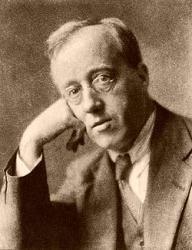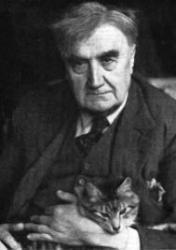Planning worship?
Check out our sister site, ZeteoSearch.org,
for 20+ additional resources related to your search.
- |
User Links
Person Results
Gloria Gaither

b. 1942 Scripture: Matthew 22:22 Author of "There's Something About That Name" in The United Methodist Hymnal Gloria Gaither (born March 4, 1942) is a Christian songwriter, author, speaker, editor, and academic. She is the wife of Bill Gaither and also sang in the Bill Gaither Trio, one of the most influential groups in recent Christian music.
She was born Gloria Lee Sickal in 1942 in Michigan, a daughter of pastor Lee Sickal and Dorothy Sickal. She spent most of her childhood and high school career in the Battle Creek area of Michigan, working a brief time for the Kellogg Company. When Sickal graduated from high school, she attended Anderson University in Anderson, Indiana. There, she triple majored in English, French, and Sociology. Upon her graduation, she took a job at Alexandria Monroe High School as a French teacher. There, she met Bill Gaither, who was teaching English at the time. She married Gaither in 1962, and they began writing songs recreationally. By the end of the 1960s, Gloria, Bill, and his brother Danny Gaither were touring steadily, as the Bill Gaither Trio.
After touring with the Bill Gaither Trio, Gaither drew her focus to the Gaither Homecoming series. She has been an active presence in every video production. Gaither is currently the scriptwriter and narrator for the Homecoming series. In 1991, she attended Ball State University and received a Master of Arts in Literature. She taught as an adjunct professor at Anderson University for periods in the late 80s and late 90s. In 1996, she spearheaded the creation of Gaither Family Reources in Alexandria, Indiana, and currently serves as co-owner and managing director. In 2002, Gaither launched Homecoming:
Gloria Gaither
Bill Gaither
b. 1936 Person Name: William J. Gaither Scripture: Matthew 22:22 Author of "There's Something About That Name" in The United Methodist Hymnal
Bill Gaither
Cecil Spring-Rice
1859 - 1918 Person Name: Cecil Arthur Spring-Rice (1859-1918) Scripture: Matthew 22:21 Author of "I vow to thee, my country, all earthly things above" in Church Hymnary (4th ed.)
Cecil Spring-Rice
Gustav Holst

1874 - 1934 Person Name: Gustav Theodore von Holst (1874-1934) Scripture: Matthew 22:21 Composer of "THAXTED" in Church Hymnary (4th ed.) Gustav Holst (b. Chelteham, Gloucestershire, England, September 21, 1874, d. London, England, May 25, 1934) was a renowned British composer and musician. Having studied at Cheltenham Grammar School, he soon obtained a professional position as an organist, and later as choirmaster. In 1892, Holst composed a two-act operetta, which so impressed his father that he borrowed the money to send Holst to the Royal College of Music. Severe neuritis in his right hand later caused him to give up the keyboard, and Holst turned to the trombone and composing. In 1895 Holst met Ralph Vaughan Williams, and the two became lifelong friends. Vaughan Williams helped Holst land his first job as a singing teacher. Holst became very interested in Indian and Hindu culture, and composed a number of operas translated from Sanksrit myths. These were not received well in England, however. Holst is best known for his composition, The Planets, as well as
Gustav Holst
George Herbert

1593 - 1633 Scripture: Matthew 22:22 Author of "Come, My Way, My Truth, My Life" in The United Methodist Hymnal Herbert, George, M.A., the fifth son of Richard Herbert and Magdalen, the daughter of Sir Richard Newport, was born at his father's seat, Montgomery Castle, April 3, 1593. He was educated at Westminster School, and at Trinity College, Cambridge, graduating B.A. in 1611. On March 15, 1615, he became Major Fellow of the College, M.A. the same year, and in 1619 Orator for the University. Favoured by James I., intimate with Lord Bacon, Bishop Andrewes, and other men of influence, and encouraged in other ways, his hopes of Court preferment were somewhat bright until they were dispelled by the deaths of the Duke of Richmond, the Marquis of Hamilton, and then of King James himself. Retiring into Kent, he formed the resolution of taking Holy Orders. He was appointed by the Bishop of Lincoln to the Prebend of Lcighton Ecclesia and to the living of Leighton Bromswold, Hunts, July 15, 1626. He remained until 1629, when an attack of ague obliged him to remove to his brother's, house at Woodford, Essex. Not improving in health at Woodford, he removed to Dantsey, in Wiltshire, and then as Rector to Bemerton, to which he was inducted, April 26, 1630, where he died Feb. 1632. The entry in the register of Bemerton is "Mr. George Herbert, Esq., Parson of Foughleston and Bemerton, was buried 3 day of March 1632."
His life, by Izaak Walton, is well known; another Memoir, by Barnabas Oley, is forgotten. Herbert's prose work, Priest to the Temple, appeared several years after his death: but The Temple, by which he is best known, he delivered to Nicholas Ferrar (q.v.), about three weeks before his death, and authorized him to publish it if he thought fit. This was done iu 1633. The work became popular, and the 13th edition was issued in 1709. It is meditative rather than hymnic in character, and was never intended for use in public worship. In 1697 a selection from The Temple appeared under the title Select Hymns Taken out of Mr. Herbert's Temple & turned into the Common Metre To Be Sung In The Tunes Ordinarily us'd in Churches. London, Parkhurst, 1697. In 1739, J. & C. Wesley made a much more successful attempt to introduce his hymns into public worship by inserting over 40 in a much-altered form in their Hymns & Sacred Poems. As some few of these came into their collection of Psalms & Hymns, 1741, revised 1743, they were long sung by the Methodists, but do not now form part of the Wesleyan Hymn Book. No further attempt seems to have been made to use the Temple poems as hymns until 1853, when some altered and revised by G. Rawson were given in the Leeds Hymn Book of that year. From that time onward more attention was paid to Herbert alike by Churchmen and Nonconformists, and some of his hymns are now widely accepted. Many editions of his works have been published, the most popular being that of the Rev. Robert Aris Wilmott, Lond., Geo. Routledge & Son, 1857; but Dr. Grosart's privately printed edition issued in his Fuller Worthies Library in 1874, in three volumes, is not only the most complete and correct, but included also his psalms not before reprinted, and several poems from a ms. in the Williams Library, and not before published. The Temple has also been pub¬lished in facsimile by Elliott Stock, 1876, with preface by Dr. Grosart; and in ordinary type, 1882, by Wells Gardner, with preface by J. A. Shorthouse.
The quaintness of Herbert's lyrics and the peculiarity of several of their metres have been against their adoption for congregational purposes. The best known are: "Let all the world in every corner sing"; "My stock lies dead, and no increase"; "Throw away Thy rod"; "Sweet day, so cool, so calm"; and "Teach me, my God, and King." [William T. Brooke]
--John Julian, Dictionary of Hymnology (1907)
George Herbert
Ralph Vaughan Williams

1872 - 1958 Scripture: Matthew 22:22 Composer of "THE CALL" in The United Methodist Hymnal Through his composing, conducting, collecting, editing, and teaching, Ralph Vaughan Williams (b. Down Ampney, Gloucestershire, England, October 12, 1872; d. Westminster, London, England, August 26, 1958) became the chief figure in the realm of English music and church music in the first half of the twentieth century. His education included instruction at the Royal College of Music in London and Trinity College, Cambridge, as well as additional studies in Berlin and Paris. During World War I he served in the army medical corps in France. Vaughan Williams taught music at the Royal College of Music (1920-1940), conducted the Bach Choir in London (1920-1927), and directed the Leith Hill Music Festival in Dorking (1905-1953). A major influence in his life was the English folk song. A knowledgeable collector of folk songs, he was also a member of the Folksong Society and a supporter of the English Folk Dance Society. Vaughan Williams wrote various articles and books, including National Music (1935), and composed numerous arrangements of folk songs; many of his compositions show the impact of folk rhythms and melodic modes. His original compositions cover nearly all musical genres, from orchestral symphonies and concertos to choral works, from songs to operas, and from chamber music to music for films. Vaughan Williams's church music includes anthems; choral-orchestral works, such as Magnificat (1932), Dona Nobis Pacem (1936), and Hodie (1953); and hymn tune settings for organ. But most important to the history of hymnody, he was music editor of the most influential British hymnal at the beginning of the twentieth century, The English Hymnal (1906), and coeditor (with Martin Shaw) of Songs of Praise (1925, 1931) and the Oxford Book of Carols (1928).
Bert Polman
Ralph Vaughan Williams
E. Harold Geer
1886 - 1957 Scripture: Matthew 22:22 Adapter of "THE CALL" in The United Methodist Hymnal
E. Harold Geer
Tom Colvin
1925 - 2000 Person Name: Thomas Stevenson Colvin, 1925- Scripture: Matthew 22:17-40 Author of "Yesu, Yesu, fill us with your love" in Together in Song Tom Colvin (b. 1925; d. 2000) was trained as an engineer and worked in that profession in Burma and Singapore from 1945 to 1948. After studying theology at Trinity College, Glasgow University, he was ordained in the Church of Scotland in 1954. He served as missionary in Nyasaland (now Malawi) from 1954 to 1958, in Ghana from 1958 to 1964, and again in Nyasaland from 1964 to 1974. His work there included preaching, education, and community development. After completing his missionary work, Colvin became a minister in the United Reformed Church of England and served an inner-city church in London. He returned to Africa in 1984 as a development consultant to the Zimbabwe Christian Council. Colvin's writings include Christ's Work in Free Africa (1964) and three collections of hymns, many written in collaboration with African Christians–Free to Serve (1966), Leap My Soul (1976), and Fill Us with Your Love (1983).
Bert Polman
Tom Colvin
Lawrence Bartlett
1933 - 2002 Person Name: L. F. B. Scripture: Matthew 22:17-40 Arranger of "CHEREPONI" in Together in Song Lawrence Bartlett was born in Sydney on the February 13, 1933. He studied at the Sydney Conservatorium of Music between 1950 and 1957, and at the Melbourne Conservatorium of Music in 1960. He also studied organ, piano, singing and composition. He was the Assistant Director of Music at the King's School, Parramatta, a tutor in church music at Ridley College in Melbourne and in 1965 he was acting cathedral organist and master of the choristers at St Andrew's Cathedral in Sydney.
Bartlett was an Anglican clergyman and wrote many compositions suitable for church performance. Bartlett was also a member of the Australian Hymn Book committee, and has been involved in the initiation of schemes for promoting the composition and performance of new liturgical music. He died in Sydney on March 17, 2002.
Nancy Naber, from http://www.australianmusiccentre.com.au/artist/bartlett-lawrence
Lawrence Bartlett
Audrey Mieir
1916 - 1996 Scripture: Matthew 22:22 Author of "His Name is Wonderful" in The United Methodist Hymnal Audrey Mieir's musical gift showed itself an early age, when she began singing and leading choral performances. In the 1950’s she established the Harmony Chorus, and worked with musician-evangelist Phil Kerr. These efforts were followed by concerts throughout America in the 1960’s. Mieir is also remembered as music director for Rex Humbard’s television show Cathedral of Tomorrow, and for helping found orphanages in Korea.
© The Cyber Hymnal™ (www.hymntime.com/tch)
Audrey Mieir


 My Starred Hymns
My Starred Hymns


